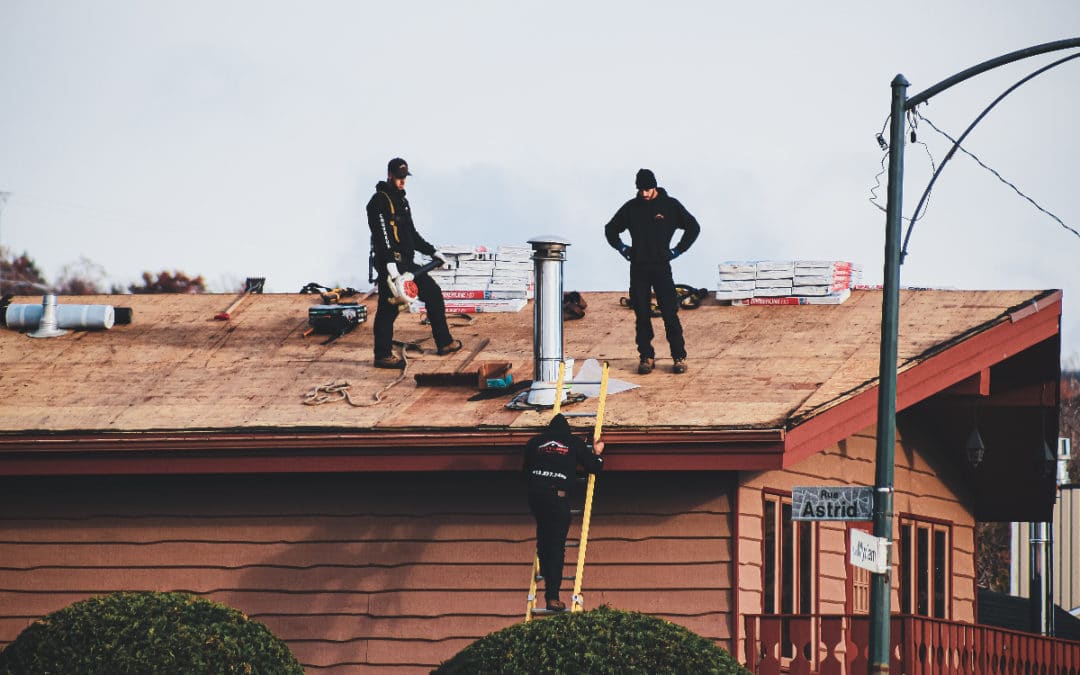One of the most crucial aspects of your home is its roof. When it’s doing what it’s meant to do, it protects your house from water damage and exposure to the weather. It also keeps the people within the house safe, secure, and warm. However, your roof will begin to exhibit symptoms of wear and tear over time. It’s easy to overlook this – perhaps not even notice it at all – until there is a severe issue, such as water ingress or broken tiles. Although you can wait until this happens, it’s preferable to be proactive and look for early symptoms and signs that a roof may need to be replaced in order to reduce repair expenses and the danger of injury or property damage. Doing this ensures that your roof (and house) remains in excellent shape, which will enhance future resale value and protect you in the meanwhile. Don’t dismiss the following indicators that it’s time to replace your roof.
Signs You Need to Replace Your Roof
Water Damage
Water damage is easily misinterpreted as signs of something else. If you detect some moist spots on the top floors of your property, for example, you might be excused for believing you had damp. Watermarks and mildew can also be attributed to water pouring in through the window after it has rained – but don’t be so confident. It could be something much worse than this. Although your assumptions may be correct, these symptoms can also indicate that you require a roof replacement or, at the very least, roofing repairs. Even little watermarks and small spots of mold might suggest that water has crept in from your roof or that your roof has a hole in it. Check your roof if you see any evidence of water damage. If you need help, call in experts to assist you; don’t ignore the problem, or it could get much worse.
Loose Roof Tiles
Check to discover if any of your roof tiles are loose during your yearly roof inspection, or ask your trusted roofing contractors to do this when you book in their next survey. Simply walking on them and inspecting their condition will let you determine if repairs are required. If you see more than a handful of loose or missing tiles, it’s time to replace your roof. A shaky roof with missing or broken tiles can collapse on you in the worst cases, so act quickly to ensure this doesn’t happen.
Weather Damage
When your roof sustains weather damage after a storm, snow, or hail, for example, it might begin to age prematurely. In fact, hail is one of the most destructive components to a roof, and it can cause your roof to seem older or possibly need an early replacement by experts as a consequence of the damage. If you reside in an area where your roof is continuously bombarded by heavy rains, strong winds, hail, or snowstorms, your roofing material will need to be inspected on a regular basis for damage, repairs, or early replacement. It’s wise to factor this in when looking for property, particularly if you are searching for a new place to live with different weather conditions from where you are now.
The Roof Has Outlived Its Expected Outspan
How old is your current roof? The lifetime of a roof can range between 20 and 50 years, although this varies depending on the roofing material, the property’s location, and how well maintained it is in general. You should know when your roof was erected so that you can predict its longevity. If you don’t know when your roof was built, you can look for home improvement records to find out. How long the roof will last also depends on whether the previous roof was removed and if there is just one layer of shingles, as well as if it is well ventilated. If the roof was built over another layer or layers and is more than 20 years old, you probably need a new roof.
There’s Some Debris In Your Gutters
Check your gutters for fragments of asphalt shingles or sand-like granules that have been used as a top layer to your roof system. These substances preserve your tiles, and granules dropping off your tiles and into your gutters might indicate that your shingles are decaying. Of course, a few stray granules are acceptable, but an increase in this residue might be a warning indication. Due to climatic fluctuations, continual exposure to weather, long-term use, and moisture, the protective layer of a roof tends to slough off, causing the asphalt to deteriorate. As a result, you should try to repair and replace tiles’ protective coatings on a regular basis. Check for debris dropping from trees nesting on your roof since this can cause the coating on your roof to deteriorate too.

